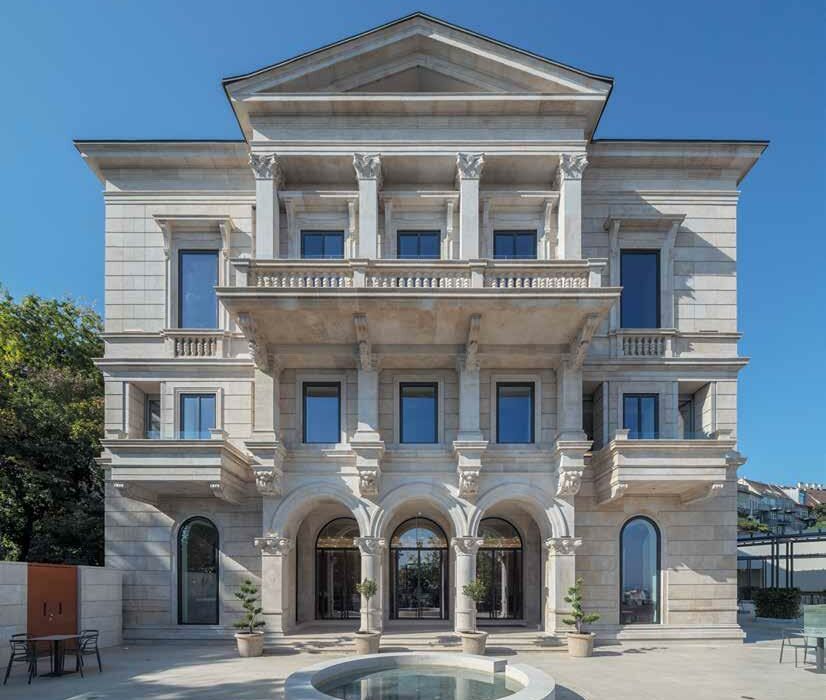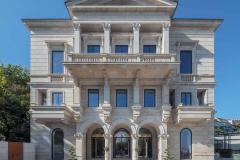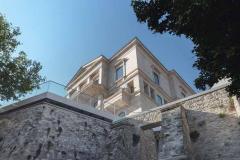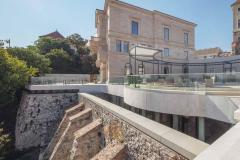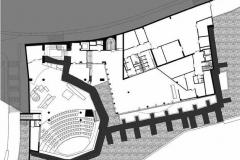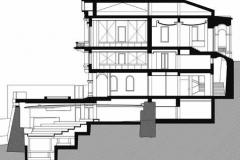Salvaging the Salvageable
Lónyay-Hatvani Mansion, Budapest
Architect: Péter Bordás
Text: Gábor Nagy
Photos: Tamás Bujnovszky
In 1872, Count Menyhért Lónyai has this mansion built as his family home after designs by Miklós Ybl on the Castle Hill in Buda. In 1915, Baron Lajos Hatvany, the world-famous art collector purchased the building which was entirely demolished in 1945 by bombardments. After the war the ruins were cleared up, and a playground was built on the site. In the latter half of the 1990s architect József Kerényi was commissioned to restore the mansion. He completed a detail of the sample facade when the design board finally rejected it. Then Kerényi gave up the idea of working on further designs for the already structurally finished structure, and the project was taken over by BORD Architects managed by Péter Bordás. The house was clad in limestone to adjust to the original architecture. In the direction of the panoramic views, a double-layer facade was designed with an internal plane of glass, whilst the external plane is clad in 48 electronically controlled stone-enveloped ferro-concrete panels that can open up the facade at the push of a button. Besides, thanks to the wide wall structure the wings opening up at a 90 degree transform into the frame of the opening, and thus one of the most beautiful detail of the building. The top floor of the mansion serves representative functions today. Benath there are offices, and also a restaurant on the ground floor. According to the re-considered and revised concept, a formative component of the areas beneath the terrain level is the abutment designed by Ybl tapering upward and supported by buttresses. This is where Bástya room is housed made complete with a concert hall for 120 people, exhibition rooms and the garden with exposed medieval ruins. The terraced space is coordinated by an oval, slightly cupola form drywall suspended ceiling designed by Tadao Ando.
Client: Batthyány Lajos Foundation
Architect (1996–2006): József Kerényi DLA
General architecture (2006–): BORD Architect Studio
Leading architect: Péter Bordás
Coordinate architects: Dorka Hindy, Róbert Benke
Construction architect: Róbert Gulyás
HVAC: Zoltán Hollókövi – BORD Technical Studio
Structure: János Volkai †
Electrical engineering: Judit Balázs, Péter Balázs
Garden, landscape: András Kuhn
